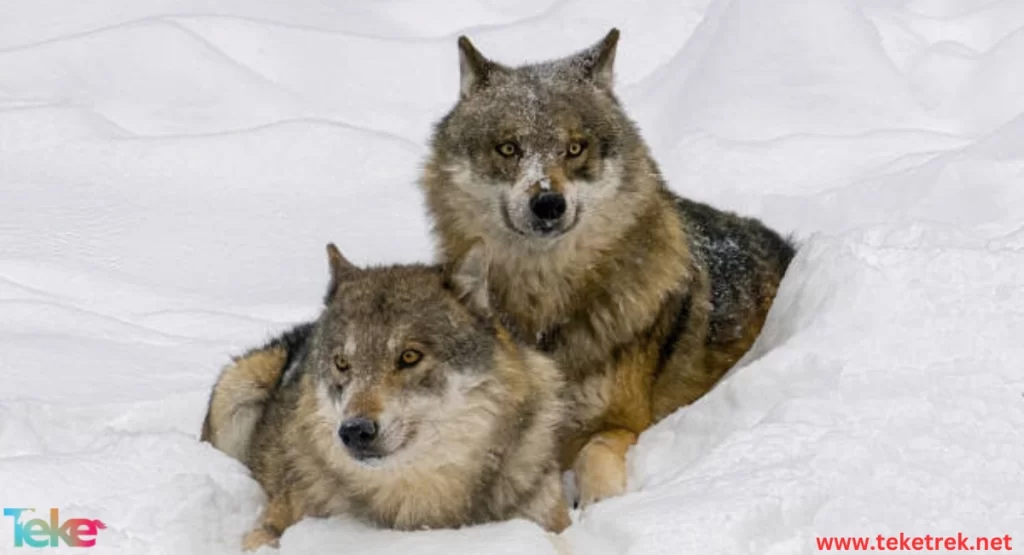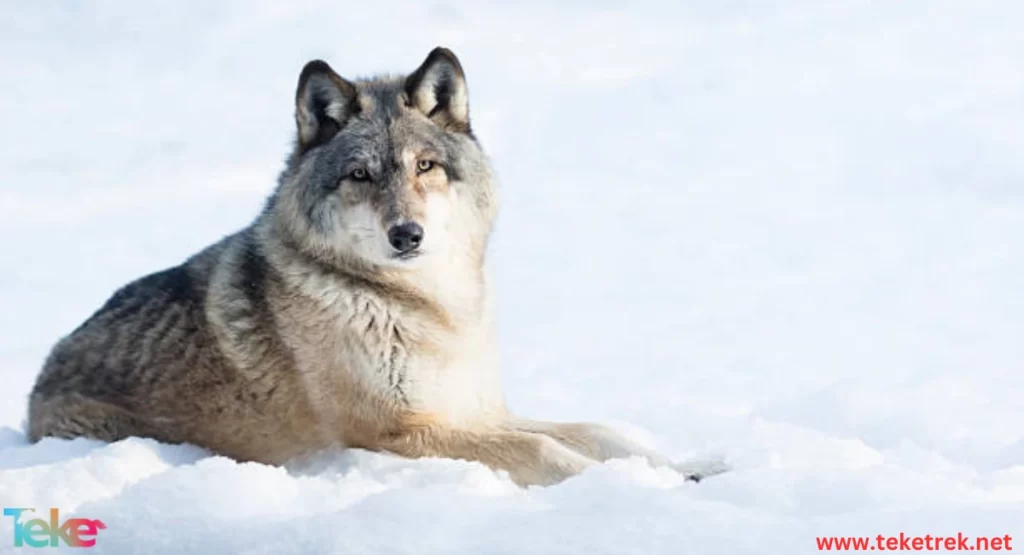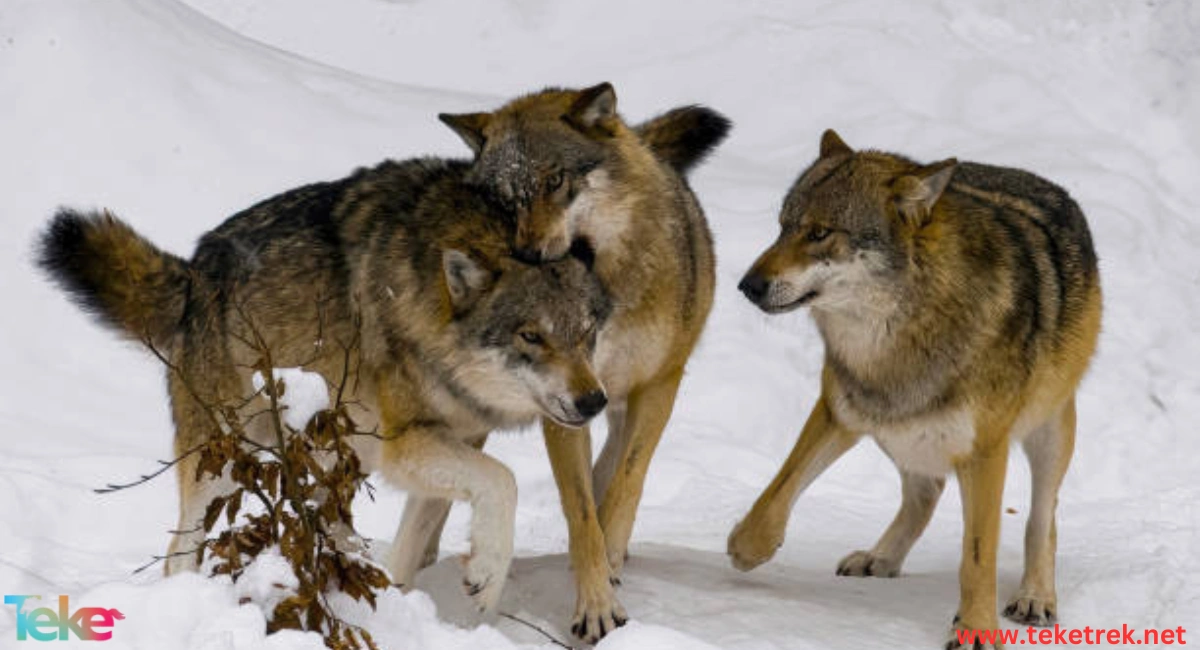The life of wolves survive in the winter strategies and adaptation to extreme cold is one of the exciting things that attracts the interest of many nature lovers. Wolves, or as they are known as (jackals), are one of the types of wild creatures that belong to the Canidae family, the Chordata division. They play a major role in the food chain because of their dependence on preying on creatures. Carnivores.
Despite their strength, wolves face a range of challenges in the winter, such as harsh weather and difficulty obtaining food due to the loss of many habitats, which requires them to develop strategies to adapt to the dangers they are exposed to.
How do wolves survive in the winter? What hunting strategies do you follow in this season? What places do you go to? How does her body adapt to weather fluctuations? We will answer these questions and many others in this article. Follow along with us.
The life of wolves survive in winter:
We can say that wolves are opportunistic creatures that work to gather in groups to form herds. They unite among themselves to form various groups that help them in some things, most notably: providing warmth by coming together to warm up and sleep in a way that helps them maintain their body temperature and protects them from exposure to severe cold attacks.
In addition, uniting wolves in packs helps them accomplish many tasks, such as group hunting, which enhances their ability to obtain food through careful coordination to surround and attack the prey. This cooperation increases the strength of the group and its ability to face potential challenges and dangers.
In this context, we must point out the characteristics of wolf fur and how it protects them from low temperatures. It consists of two layers:
A dense inner layer serves as a thermal insulator, playing a major role in maintaining the wolf’s body heat even on extreme cold days.
The outer layer is thick and has great water resistance. It provides additional protection from rain, snow and wind, and also keeps the inner layer dry.
It should be noted that wolf fur has the ability to adapt seasonally, and especially during the winter, it becomes thicker and denser, thus providing more warmth.

Winter fishing strategies:
In winter, wolves rely on a set of strategies to maintain their lives and secure their requirements, but this matter is modified according to the scarcity of food. As we know, during the winter temperatures drop, which leads to a decline in the activity of prey and their scarcity, which requires wolves to find strategies and techniques. New ones help them find prey and pounce on them, as they rely on the herd and teamwork to facilitate this matter, and they work to divide the roles starting from tracking and chasing, all the way to surrounding the prey. When wolves succeed in Hunting large prey, they are divided into groups. Some surround it and resort to biting the sides and shoulders, some approach it from behind, while the other group grabs the prey by its nose.
https://teketrek.net/west-african-giraffe/
Shelter and protection sites:
When the winter season arrives, which heralds a drop in temperature, wolves search for places where they can resort to sleep and obtain warmth. They take caves and natural holes as their homes, which constitutes natural insulation that protects them from extreme cold and helps them maintain their body temperature, in addition to what These sites play an important role in protecting their young and sparing them from the possible effects of low temperatures. In this context, we must point out the following points:
The entrance to the wolf den reaches 45 cm in diameter.
The corridor may be straight, branched, or winding.
Its length ranges between 1.5 and 5.5 meters.
At the end of the den is a room that is 127 cm wide, 50 cm high, and about 1 meter deep
https://teketrek.net/the-effect-of-winter-cold-on-the-health-of-horses-tips-to-protect-your-horse-in-cold-weather/
Amazing physiological adaptations of wolves:
Wolves are among the creatures that have the greatest ability to adapt to low temperatures. As we know, their fur provides them with protection from low temperatures and changes with the change of the seasons, becoming thicker and denser in the winter in order to keep them warm under harsh weather conditions such as wind and snow. Protect it from water.
Wolves’ winter adaptations are not limited to fur, but we also notice a decrease in their nutritional needs during this time of the year. As we know, under harsh climatic conditions, food is scarce, so wolves resort to limiting their physical activity in order to save energy, in addition to having fat reserves. She can depend on it to provide her body with the energy needed to survive.

The importance of wolves in the winter ecosystem:
Wolves play an essential role in the ecosystem. They are located at the top of the food chain, and they work to regulate the number of animals such as deer and elk, in addition to their major role in protecting plants and animals in the places they live. An increase in the number of harmful animals leads to disturbance within the ecosystem and a decrease in the number of harmful animals. In the vegetation, wolves resort to attacking it and taking it as a food source, thus restoring the ecological balance.
It should be noted that wolves have a great ability to smell and track. They can easily identify animals infected with certain diseases, so they prey on them before the disease reaches the rest of the creatures, which protects the ecosystem from the spread of these diseases.
In conclusion of our talk about wolves survive in winter, we find that they are exceptional creatures that possess a high degree of strength and intelligence that helps them adapt to various surrounding conditions, thanks to their thick fur that protects them from the cold, and the hunting strategies they follow, so it is necessary to recognize and protect these amazing creatures. To maintain environmental balance.





